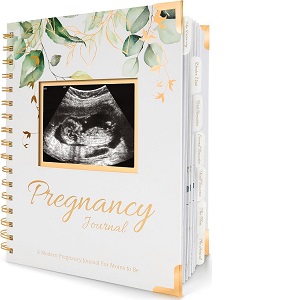
In the U.S. 2% of babies are born from IVF based on an article from CNN. It would have been selfish on my part to not allow my wife to experience pregnancy. After her surgery, she had to lose both her Fallopian tubes due to an infection. Therefore, the only option available was IVF. It was an uphill ride. There were a lot of tears from the both of us. Finally, we were able to have the family that we wanted after numerous tries.
Why Infertility?
There are numerous reasons why a woman will engage in IVF. Such as, issues with ovulation, Fallopian tube function, uterus health, and age.
For men, the reasons could be from poor sperm quality, testicular issues, hormonal balances, and lifestyle factors. Excessive alcohol consumption and obesity may also lead to consideration of IVF.
What is IVF?
After the initial consultation at the fertilization clinic, a thorough assessment is done for both the woman and man. The woman is tested for ovarian reserve, thyroid function, and screening for STDs. Meanwhile, the man is tested for sperm quality.
After everything was good, the next step is taking fertility drugs for ovarian stimulation for a couple of weeks. This encourages the ovaries to produce more eggs. It’s crucial for the IVF process to ensure multiple eggs are available.
The woman is monitored closely during this phase with hormonal testing and ultrasounds. This ensures the optimal development of eggs while managing the dosage of fertility drugs.
Once it is determined that the eggs are ready for maturation, blood tests are taken to see what the hormonal levels are. Then a “trigger shot” is given for preparation of egg retrieval.
Egg retrieval
36 hours after the “trigger shot” and before the eggs begin to ovulate naturally, your medical provider will inform the woman to come into the clinic to begin egg extraction. A thin needle with a suction device is inserted in the vagina. This needle is guided by ultrasound to the ovaries to pull eggs out of each follicle.
During this phase, the male is to come in to provide sperm and will be stored for fertilization.
Afterwards, the eggs are taken to the laboratory to check for maturity and quality. The embryologist will fertilize the mature eggs with sperm. This critical step in IVF involves precise conditions. These conditions ensure successful fertilization.
Over the next few days the development of embryos is carefully monitored. In the meantime, the woman will take another set of medication to prepare the uterus.

After a few days, another visit to the clinic is required for embryo transfer, usually 3-5 days after fertilization.
A catheter will be used to place the mature embryos in the uterus guided by ultrasound. This is a precise step within the broader IVF treatment process.
The moment of truth
Around 2 weeks is when the woman returns to the clinic to get blood drawn to confirm pregnancy. The body secretes the hormone human chorionic gonadotropin (hCG) into the bloodstream when pregnancy is detected. This hormone is what the doctor is looking for to give the good news of pregnancy.

Support is key
As a husband, I had to talk thoroughly and be honest with my wife before going through this endeavor. Especially knowing the challenges associated with IVF. If there are any concerns, fears, or feelings, this would be the time to say it. This is before the treatment begins.
Don’t be judgmental, listen actively, and be empathetic.
Once treatment began, my wife had to rest a lot based on the doctor’s recommendation. She was in an age group where the pregnancy success rate was lower.
That meant that I had to be supportive. I would attend appointments with her, run errands, prepare meals, and handle any other family needs.
The emotional roller coaster
I am trying to understand infertility, and what I can say is, it is very complex. Especially if it has to do with women. The emotional toll of IVF can be significant. It is important to be aware of this.
There is so much emotion and psychological energy that goes into infertility from both parties.
It started from my wife losing both her Fallopian tubes due to an infection in 2013. The stress that came afterward was “why her”.
As we both began this journey, there were times when I needed to vent my stress. For me, exercising helped. I enjoy running. So, I would go out to clear my mind and forget for a bit.
A lot of Prayers
We both prayed that this would work out. I guess this was our way to be hopeful in the process.
We learned early on that there would be challenges. For instance, the embryos would not stick on the first try. This is a common experience in the IVF journey.
Regardless of the situation, I prioritize our relationship. I will tell my wife regularly that “We are a team”. I stick to that phrase. I think it gives her assurance.
Sometimes we find humor in those challenges. To even get a laugh from something that might not be humorous is healthy. Do it! It helps both of you emotionally.
As a husband or partner, it was hard for me because, as men, we want to fix whatever it may be. This is a journey where you have to watch your wife go through it on her own, physically. There’s nothing you can do.
You have to be 100% sure of going through it before it starts, and that you’re in it for the long haul. We lost plenty but gained 2 children through IVF. I was ready to throw in the towel when we lost the twins. Mustering the courage for one more try was worth a shot. Fortunately, it worked.
If you have to talk to others (i.e., family and friends) about it, do so. It will not be easy and not cheap, but it’s well worth it.
To learn more about me, you can go to my “About Me” page.